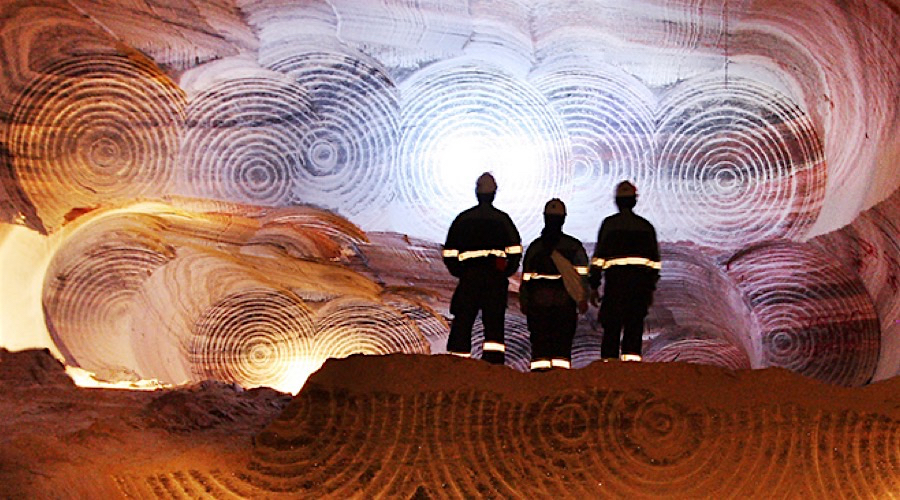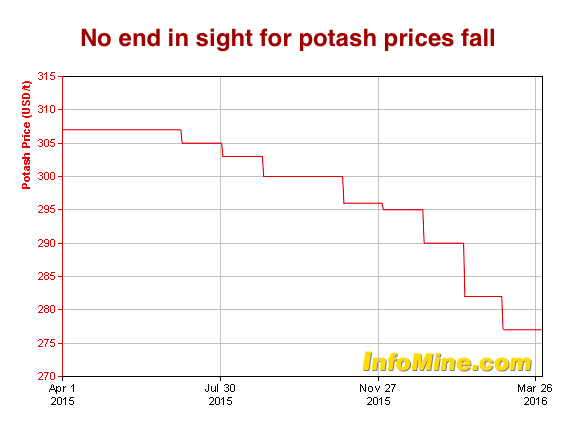
Vale’s Taquari-Vassouras is the only potash mine in Brazil. The operation, whose production capacity is 625,000 metric tonnes per year, is a partnership with Petrobras. (Image courtesy of VALE SA)
Potash producers are having a tougher time this year than miners focused on other commodities as prices for the fertilizer ingredient remain low on increased competition and a supply glut triggered by lower demand from top consumers China and India.
To make things worse, companies from Canada, Russia and Belarus have yet to sign 2016 contracts with China, which used to be secured in January. The price agreed at the start of each year is a benchmark for suppliers and customers around the world and it sets the tone for the coming months.
The lack of such deals has already made some producers downgrade their outlook for the year. Russia’s Uralkali, the world’s largest potash miner by volume, said last week it expects demand to fall to 58-60 million metric tons, down from 61 million tons in 2015.

Potash prices are hovering around $240 a tonne, down from more than $800 a tonne in 2008.
As producers’ stockpiles have climbed, so has competition, especially following the breakup in 2013 of a Russian-Belarusian marketing cartel that previously helped limit supply.
German K+S AG (FRA:SDF) is expected to begin producing potash at its Legacy project in Saskatchewan, Canada, later this year.
Another large project, the Garlyk mining and processing factory in Turkmenistan, is set to kick off operations in early 2017.

Rocanville storage. (Image courtesy of Potash Corp.)
Newcomer Sirius Minerals (LON:SXX) has already began building a potash mine beneath a U.K. national park, which is set to start producing in 2018.
Russia’s EuroChem is developing two potash mines — Usolskiy and VolgaKaliy, with an expected 2.3 million tons of annual production each in the first phase of development.
Other smaller actors are moving ahead with new exploration projects. London-listed Harvest Minerals Limited (LON:HMI), for instance, announced Tuesday it had began tangible exploration work at its two projects in Brazil, country that currently imports 90% of its potash needs.
With potash prices hovering around $240 a tonne, down from more than $800 a tonne in 2008, there are other major projects waiting for a market recovery before moving ahead.
The most famous is BHP Billiton’s (ASX,NYSE:BHP) Jansen mine, once touted the miner’s “next big project,” which recently saw its development budget reduced once again due to low potash prices and uncertain outlook.
There is also Mosaic’s (NYSE:MOS) Esterhazy mine, which will produce about 6.3 million tonnes per year once its latest expansion is complete.
The current market conditions drove Standard & Poor’s to downgrade three of the sector’s main players last week — Potash Corp. (TSE, NYSE:POT), EuroChem and K+S.
The credit rating agency said it expected potash, nitrogen, and phosphate prices to stay below 2015 levels for the “next several years,” and anticipated drops of 10% to 30% in the next two years.